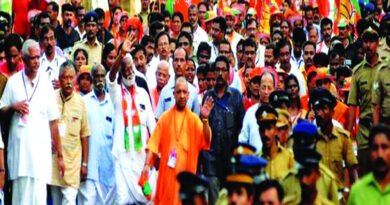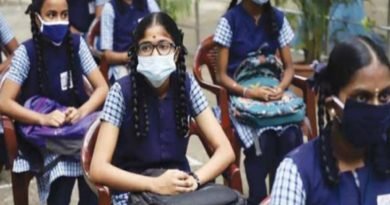History proves Bagh Hazarika fought beside Lachit Borphukan. Assam govt is denying Muslims
Assamese indigenous Muslims are unhappy that CM Himanta Biswa Sarma claimed the non-existence of Bagh Hazarika when the Hindu-Muslim divide is already on the rise.
Assam’s Chief Minister Himanta Biswa Sarma’s recent statement that Muslim warrior Bagh Hazarika aka Ismail Siddique didn’t exist has not gone well with the state’s people, especially its indigenous Muslim population. Hazarika is known to have fought against the Mughals at the Battle of Saraighat with the great Ahom general Lachit Borphukan.
This needless controversy has been brought up by the CM at a time when the state is celebrating the 400th birth anniversary of the Ahom general. Prime Minister Narendra Modi attended the anniversary celebrations on 24 November 2022 and said, “He (Borphukan) epitomised unparalleled courage. He placed the well-being of people above everything else and was a just as well as visionary leader.”
A three-day program was organised in Vigyan Bhawan, New Delhi to commemorate the 17th-century Ahom general. This was Modi’s as well as BJP’s effort to highlight the unsung heroes, particularly of the Northeast. BJP strongly feels that Indian history has been distorted by the grand old Congress party and Left-leaning intellectuals, because of which many great people of the country have not found their rightful place in India’s history.
Agenda behind praising unsung heroes
There is no denying the fact that the current government has been making concerted efforts to highlight the contributions of the Northeast in India’s fight against British rule, invading Mughals, etc. The prominent personalities whom the government has tried to bring to the limelight include Rani Gaidinliu (a freedom fighter belonging to the Rongmei Naga tribe) and Major Bob Khathing (the Indian Army officer who was the first person to hoist the Tricolour at Tawang on 14 February in 1951) among others.
However, along with the government’s efforts to highlight the unsung heroes, there appears to be an underlying agenda to undermine the role of Muslims in nation-building. Himanta Biswa Sarma’s statement that there was no Muslim warrior who fought side by side with Lachit Borphukan is probably a part of this campaign. The chief minister said that Bagh Hazarika was an imaginary character and added that there was another person by the name of Nar Hazarika (an Ahom) with Lachit Borphukan in the Battle of Saraighat.
The great Ahom general
People of Assam grew up reading about the heroic deeds of the Lachit Borphukan. He is revered by everyone in the state irrespective of religion, caste, or language. The Ahoms ruled Assam for 600 years (1228 AD to 1826 AD). They had entered India from then Shan state (now part of Myanmar), crossed the Irrawaddy River, and established their kingdom in Sivasagar. They subdued all other small kingdoms in the state, and in the process, the Ahoms assimilated all tribes into their fold. The great Ahom Army not only consisted of Ahoms but also other small ethnic and religious groups like Maran, Matak, Koch, Chutias, Muslims, etc.
Unlike the Maratha warrior Shivaji or Rajput warrior Rana Pratap Singh, who are well-known in the entire country, Lachit Borphukan is known only in Assam. Credit must be given to the former Governor of Assam, the late Lt General SK Sinha, who in 1999 sought recognition for Borphukan and introduced the Lachit Award for the most outstanding cadet passing out from the National Defence Academy.
Lachit Borphukan is revered not only for defeating the Mughal army but also for his display of extraordinary loyalty to the Ahom kingdom. Borphukan killed his uncle who failed to construct a rampart within the scheduled time frame and gave flimsy excuses. The rampart was to be constructed urgently to prevent the invading Mughal army from crossing the mighty Brahmaputra River. When his uncle failed to meet the deadline, Borphukan chopped his head with his sword in front of everyone. This incident of beheading his uncle for disobedience instilled fear among the soldiers and the rampart was completed overnight. The great naval warrior Lachit Borphukan exploited the Brahmaputra River to crush the invading Mughal army.
The efforts of the central and state government to make the nation aware of the heroic deeds of Borphukan is well appreciated. But this appears to be a latent intention to systematically erase the contribution of Muslims from the public’s mind. The valour of Bagh Hazarika is well documented in Assamese history books written by eminent historians. Noted historian S K Bhuyan on page 229 of his book The Annals of Delhi Badshahate (published in 1825) has written, “The Mohammedan Commander Bagh Hazarika whose military genius was partly responsible for the success of Lachit Borphukan operations against Ram Singh.” Ram Singh had led the army of the Mughal emperor Aurangzeb. Similar views are documented by other well-known historians.
Bagh Hazarika of Sivasagar
The original name of Bagh Hazarika is Ismail Siddique, he belonged to a small village near Sivasagar. In his youth, he killed a tiger who was carrying mayhem in the village. People started calling him Bagh (the Assamese word for Tiger). The king of Assam at the time, Chakradhwaj Singha was so fascinated by these heroic deeds that Ismail Siddique was made commander of 1,000 soldiers (Hazar means thousand). Thus, he became famous as Bagh Hazarika. It is, therefore, difficult to fathom what could be the interest of historians, even Hindu historians, to create an imaginary Muslim warrior as brought up by the chief minister of Assam.
The indigenous Muslim population of the state, who are approximately 40 Lakh in number, are part and parcel of the greater Assamese society. Their contribution to every facet of Assam cannot be underestimated, and they are unhappy that the CM is making such a statement at a time when the Hindu-Muslim divide is on the rise.
Noted Assamese litterateur Abu Nassar Sayeed Ahmed said that the best the government could do is task a university or research institute to carry out a detailed study and unearth the truth.
Four centuries after Bagh Hazarika’s heroics, the people of Assam opine that at this juncture how does it matter if Bagh Hazarika existed or not? The people of Assam should be proud that their army defeated the mighty Mughal army at the Battle of Saraighat, and after that, the Mughals kings of Delhi did not dare to set their eyes on Assam again.
Brigadier Ranjit Borthakur has held several important Field and Staff appointments. He has served extensively in Counter insurgency environment in the North-East as well as in Jammu & Kashmir.
(Edited by Ratan Priya)
Source: The Print




